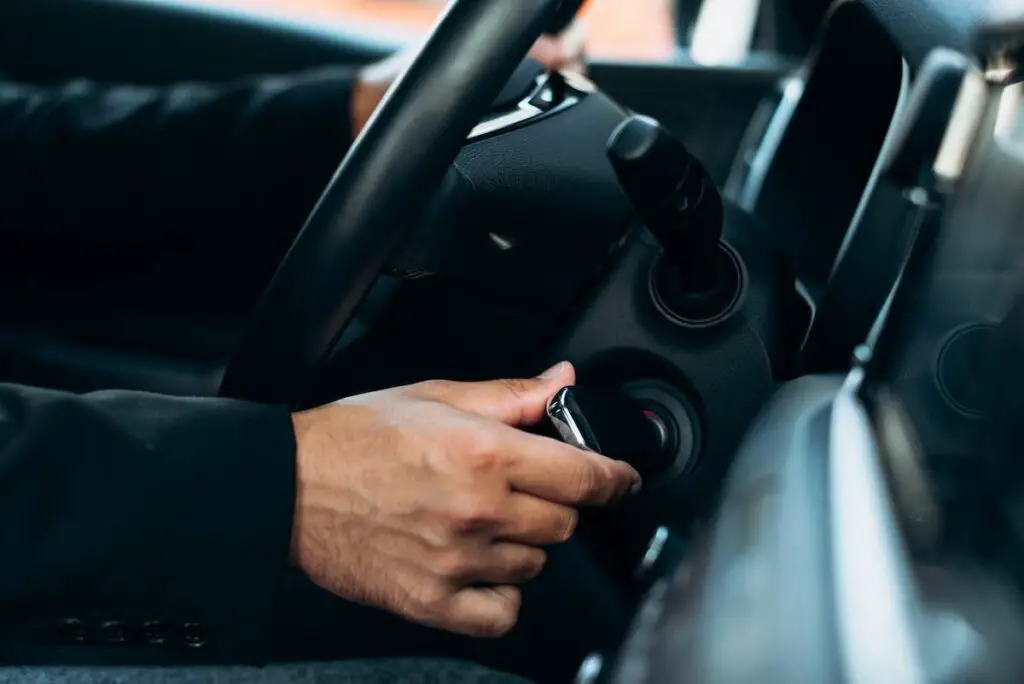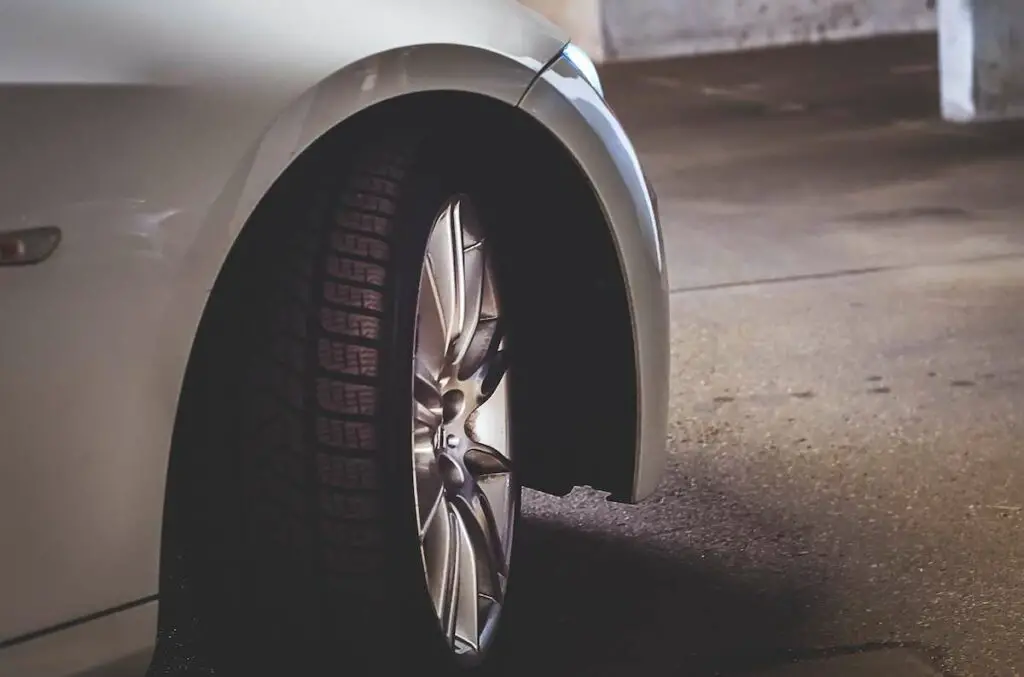Steering Wheel Locked and Can’t Start Car? Do THIS!
When your steering wheel locks for the first time, it can be panic-inducing. And if you don’t know what to do, you can waste a lot of time trying to figure it out. Thankfully, there are logical explanations why a steering wheel may suddenly lock and a few easy fixes you can try for when this happens.
A locked steering wheel is a safety measurement to prevent theft. Dirty or low power steering fluid levels and a faulty power steering system can also cause the steering wheel to lock. Solutions include disengaging the ignition lock, topping up your steering fluid, or checking your steering system.
A locked steering wheel can be alarming, but don’t panic. With a little know-how, you can be on your way in no time. Read on to learn more about why your steering wheel locks and what you can do to fix it.
What Causes a Steering Wheel to Lock?
There are a few reasons your steering wheel might be locked and unable to turn. Understanding the cause can help you determine the best course of action to take. Here is a lowdown of the most common reasons for a locked steering wheel and how to fix them:
1. Ignition Lock is Engaged

One of the most common reasons for a steering wheel that won’t turn is simply because the ignition lock is engaged. An ignition lock is a revolutionary safety feature designed to prevent theft.
When the key is removed from the ignition, it automatically locks the steering wheel so that would-be thieves can’t just hotwire your car and drive away.
When the ignition lock is engaged, a locking bolt extends from the key cylinder into a slot in the steering column. This bolt physically prevents the steering wheel from turning, so the car can’t be steered even when the engine is on.
How to Fix
The only way to fix this is by disengaging the ignition lock. You will need to put the key into the ignition and turn it slightly. From there, you should be able to gently turn the steering wheel and get on your way.
Keep in mind that if your key is worn, damaged, or otherwise not working properly, you may have difficulty disengaging the ignition lock. You may need to use a spare key or have your key replaced by a professional.
Additionally, you may experience a lot of tension on the lock cylinder when trying to turn it. When you insert the key, try gently turning the wheel in different directions to get it moving again.
If you don’t think a steering wheel lock is the problem. Read my article on Car Won’t Start or Make Noise to learn other possible reasons why your car might not start.
2. Dirty or Inadequate Power Steering Fluid
If your car has power steering, then it relies on power steering fluid to function correctly. This fluid makes it much easier to steer the vehicle without requiring a lot of effort or force.
Over time, this fluid can become dirty or low, leading to steering problems. If your steering wheel locks, it may be a sign that something is wrong with your power steering fluid.
How to Fix
If you suspect that your power steering fluid might be the culprit, you should first check the fluid level. If it is low, topping it off with the recommended type of power steering fluid should do the trick. However, if the fluid is dirty, you will need to flush out the system and replace the fluid entirely. This is a job best left to a professional.
A power steering system flush involves hooking up a machine to your car’s power steering system and flushing the dirty fluid out with clean fluid. Once the system has been flushed, a new power steering fluid can be added.
3. Faulty Power Steering System
If topping off your power steering fluid or flushing the system doesn’t fix the problem, there is likely an issue with your power steering system itself. Your power steering system is made up of several different components, any of which could fail and cause steering problems.
The most common power steering system issues include:
- Damaged power steering rack: The power steering rack is the component that actually controls the movement of your wheels. When faulty, it can cause your steering to feel stiff, making it hard to turn.
- Clogged steering rack internals: The steering rack contains several small passages that allow the power steering fluid to flow freely. Over time, dirt and debris can build up in these passages, causing a blockage. This can lead to poor steering response and increased steering effort.
- Leaking power steering hose: The power steering system relies on several hoses to deliver fluid to the various components. A leak in any of these hoses can cause a drop in fluid level, resulting in steering issues.
How to Fix
The best way to fix a faulty power steering system is to take your car to a professional. This is a mechanical issue that is best handled by someone with the necessary skills, experience, and equipment.
A professional mechanic will be able to diagnose the problem and make the necessary repairs. Before you settle on a particular mechanic, check their reviews to ensure they are qualified to work on your car.
4. Sticky Locks in the Steering Wheel
Your car’s steering system can become sticky for several reasons. The most common cause is build-up on the steering components, which can be caused by dirt, grease, and other debris.
Over time, this buildup can make it harder to turn the steering wheel. In some cases, it can even cause the steering wheel to lock up completely.
A loss of lubrication caused by leaks in the steering system can also lead to sticky steering. This is because the lubricant helps to protect the components from wear and tear. Without it, the components can start to break down, making it harder to turn the steering wheel.
How to Fix
Luckily, fixing sticky steering is usually a relatively simple process. There are several ways you can clean the steering components, depending on the severity of the build-up.
For light build-up, you can try spritzing a small amount of contact cleaner into the hole of your ignition. Then try to move the key a little bit in the ignition.This will help to loosen the build-up and make it easier to turn the key.
Alternatively, you can use pressurized air to blow the buildup out of the key hole. All you have to do is aim the can at the keyhole and spray it with air a few times to clear out any dirt or dust that has accumulated.
For more stubborn build-up, use something bigger to help break up anything that’s stuck in your ignition. You can also use a small brush, like a toothbrush, to scrub the build-up. You can also use your key or another similar object. Be firm when cleaning out the ignition, but be careful not to damage the components in the process.
If the build-up is really bad, you may need to take your car to a professional. They will remove the steering wheel and clean all the components, restoring your car’s steering to like-new condition.
5. Turning off the Engine When Front Wheels Are at an Angle

You probably are a victim of turning off the engine when the front wheels are at an angle. Turning off the engine when the front wheels are at an angle are one of the main reasons that can cause the steering wheel to lock.
When parking, always ensure the front wheels are pointing straight before switching off the engine. This will help to prevent the steering wheel from locking. If you’re parked on a hill, make sure the car is in park before turning off the engine. You can also use the parking brake to keep the car from rolling away.
How to Fix
If your steering wheel is already locked, thankfully there are a few things you can try to fix the problem.
The first thing you should do is turn on the ignition. This will help to unlock the steering wheel. If that doesn’t work, try turning the steering wheel to the side, allowing slight movement. Grab the wheel with both hands and apply gentle pressure to turn it.
You can insert the key into the ignition and turn it as far as it will go, then gently move your steering wheel in either direction until you can feel the keyhole give way to turn the vehicle all the way on.
You can try jiggling the key if the steering wheel is still locked. Insert the key into the ignition and wiggle it back and forth until the steering wheel unlocks. Lastly, you can also try applying pressure to the steering wheel while you turn the key. This may help to break the steering wheel free.


![Car AC Cold Only When Driving? [Here’s Why And How to Fix!]](https://vehicleuniversity.com/wp-content/uploads/2023/01/exhausted-young-woman-suffer-from-heat-inside-car-2022-08-01-04-58-09-utc-768x576.webp)

![Can You Open a Car Door Underwater? [Here’s What to Know!]](https://vehicleuniversity.com/wp-content/uploads/2023/01/Depositphotos_52375185_XL-768x512.jpeg)
![Blown Alternator Fuse? [Symptoms, Cause, Fix, and More!]](https://vehicleuniversity.com/wp-content/uploads/2023/01/checking-car-fuses-2021-08-26-23-04-18-utc-768x576.webp)
![Car Won’t Start But Radio Works? [Reasons & How to Fix!]](https://vehicleuniversity.com/wp-content/uploads/2023/01/hand-press-on-button-on-the-car-radio-close-up-2022-01-05-19-28-02-utc-768x576.webp)
![Difference Between Tire and Wheel? [Complete Guide!]](https://vehicleuniversity.com/wp-content/uploads/2023/01/men-working-in-the-warehouse-with-tires-2022-01-19-00-27-19-utc-768x576.webp)